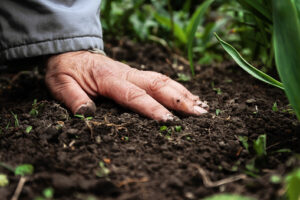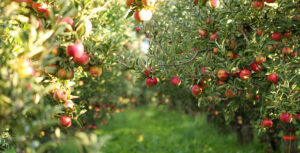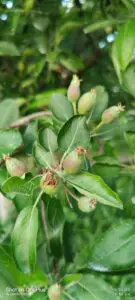Pruning is an essential part of apple tree care. It helps to shape the tree, improve its health, and increase its fruit production. However, pruning can also be a daunting task for many gardeners. How do you know when to prune, how much to prune, and what tools to use? In this blog post, we will answer these questions and provide some tips and techniques for pruning apple trees.

When to prune apple trees
The best time to prune apple trees depends on the climate and the type of pruning you want to do. Generally speaking, there are two main types of pruning: dormant pruning and summer pruning.
Dormant pruning is done in late winter or early spring before the buds break. This is the time to do major structural pruning, such as removing dead, diseased, or damaged branches, thinning out crowded or crossing branches, and shaping the tree’s framework. Dormant pruning stimulates new growth and helps to open up the canopy for better light and air circulation.
Summer pruning is done in late summer or early fall, after the harvest. This is the time to do minor corrective pruning, such as removing suckers, water sprouts, or unwanted shoots. Summer pruning slows down growth and helps to direct the tree’s energy to fruit development.
How much to prune apple trees
The amount of pruning you need to do depends on the age, size, and condition of your apple tree. As a general rule of thumb, you should aim to remove about 20% to 30% of the tree’s branches each year. However, this may vary depending on the following factors:
- The age of the tree: Younger trees need more pruning than older trees to establish a strong and balanced framework. Older trees need less pruning but more maintenance to remove dead or diseased wood and rejuvenate fruiting branches.
- The size of the tree: Larger trees need more pruning than smaller trees to reduce their height and width and make them easier to manage and harvest. Smaller trees need less pruning but more attention to detail to ensure they have enough space and light for optimal growth and fruiting.
- The condition of the tree: Healthy trees need less pruning than unhealthy trees to maintain their vigor and productivity. Unhealthy trees need more pruning to remove any sources of infection or stress and improve their health and appearance.
What tools to use for apple tree pruning
The tools you need for apple tree pruning are simple and easy to find. You will need:
- A pair of sharp and clean bypass pruners for cutting small branches up to 1 inch in diameter.
- A pair of sharp and clean loppers for cutting medium branches up to 2 inches in diameter.
- A sharp and clean pruning saw for cutting large branches over 2 inches in diameter.
- A sturdy ladder for reaching high branches (optional).
- A pair of gloves for protecting your hands from cuts and scratches (optional).
Before you start pruning, make sure your tools are sharp and clean. Dull or dirty tools can damage the tree’s tissues and introduce diseases. You can sharpen your tools with a file or a whetstone and disinfect them with rubbing alcohol or bleach solution.

How to prune apple trees
Now that you know when, how much, and what tools to use for apple tree pruning, let’s look at some basic steps and techniques for doing it right.
Step 1: Start with the four Ds
The first step in any pruning session is to remove the four Ds: dead, diseased, damaged, or dysfunctional branches. These are the branches that are broken, rotten, infected, or growing in the wrong direction. They can compromise the health and structure of the tree and reduce its fruit quality and quantity.
To remove these branches, cut them off at their base or at their point of attachment to a healthy branch. Make sure you cut just outside the branch collar (the swollen area where the branch joins the trunk or another branch) without leaving a stub or cutting into the collar. This will allow the tree to heal faster and prevent decay or infection.
Step 2: Thin out crowded or crossing branches
The next step is to thin out any branches that are too close together or crossing over each other. These are the branches that compete for space, light, air, or nutrients. They can cause rubbing wounds, shading problems, poor fruiting, or weak growth.
To thin out these branches, cut them off at their base or at their point of attachment to a healthy branch. Make sure you leave enough space between the remaining branches for good light penetration and air circulation. A good rule of thumb is to leave about 6 inches between lateral branches on the same level and about 12 inches between vertical branches on different
Conclusion
Pruning is an important part of maintaining the health and productivity of apple trees. By following these techniques and pruning during the dormant season with sharp and clean tools, you can help improve the quality and size of the fruit, stimulate new growth, and maintain the overall health of the tree. If you’re unsure about pruning your apple tree, consult with a local expert or arborist for guidance.




Pingback: Common Pesticides used in Agriculture - The Orchard Master
Pingback: How to Prevent and Treat Alternaria Disease in Apple Trees - The Orchard Master
Pingback: Rainfall and its effect on Apple trees - The Orchard Master
Pingback: Apple Tree Canker: Everything You Need to Know - The Orchard Master
Pingback: Everything we know About Lenticel Blotch in Apples - The Orchard Master
Pingback: How to Fertilize an Apple Tree: An Ultimate Guide - The Orchard Master
Pingback: How to combat Calyx End Rot in Apples - The Orchard Master
Pingback: How to Manage Necrosis and Alternaria in Humid Conditions - The Orchard Master